I am SO excited to share this garden update with you today!! If you followed along with mine and Justin’s garden shenanigans last year you’ll know that we have turned into quite the professional gardeners (I mean, with the help of a few people of course … LOL!). Two years ago was the very first time that Justin and I had a garden of our own. I mean, we have always dabbled in gardening but we never really had one that we worked on together.
I have to say that our gardening season two years ago was quite successful but there were certainly a few lessons we learned along the way. So, with gardening season almost in full effect, I thought it would be a great time to share some of the lessons we learned as well as our vegetable garden layout from last year (which we also had approved by the experts at West Coast Seeds!).
If you are new to the vegetable gardening world I would suggest also reading 5 Veggie Garden Must-Knows blog, it’s filled with handy info from the pros!
Alright, let’s dig into today’s blog!

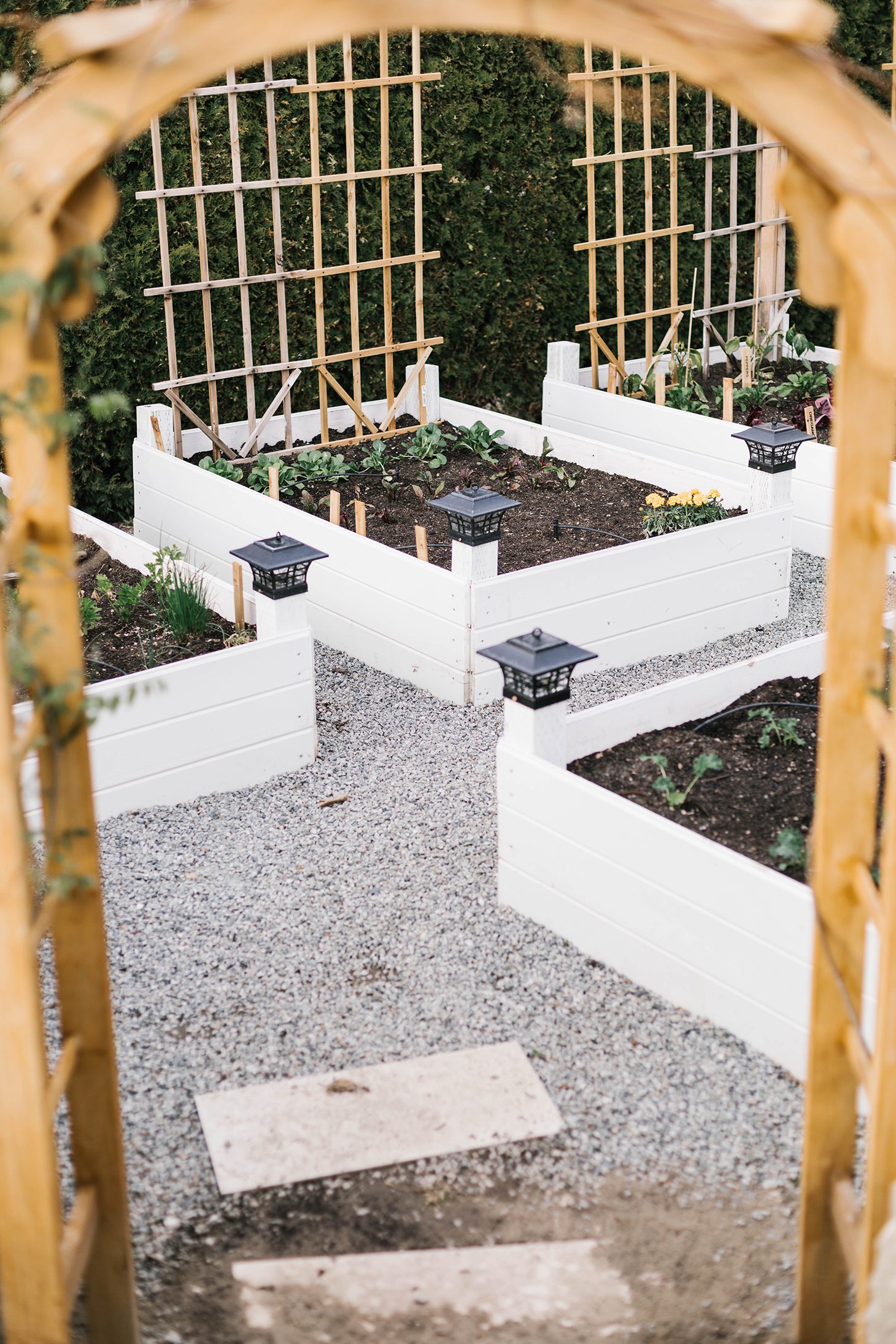
Two very important lessons we learned about gardening:
1. Companion planting
It’s really important when you are about to plant something to research what its companion plants are and also to figure out what it doesn’t like to be planted with. Companions help each other grow and use garden space efficiently. This simple step can really affect the growth and success of your vegetables and plants.
2. Succession planting
This is really important for vegetables like carrots, radish, and onions because once you pick these vegetables, they do not regrow. If you don’t sew your seeds all at once and instead sew them one to two weeks apart, your produce will come up in batches instead of having 10 pounds of carrots all at once. We are succession planting this year, and I’m SO excited to test it out!!
Here was the layout of our garden from two years ago!
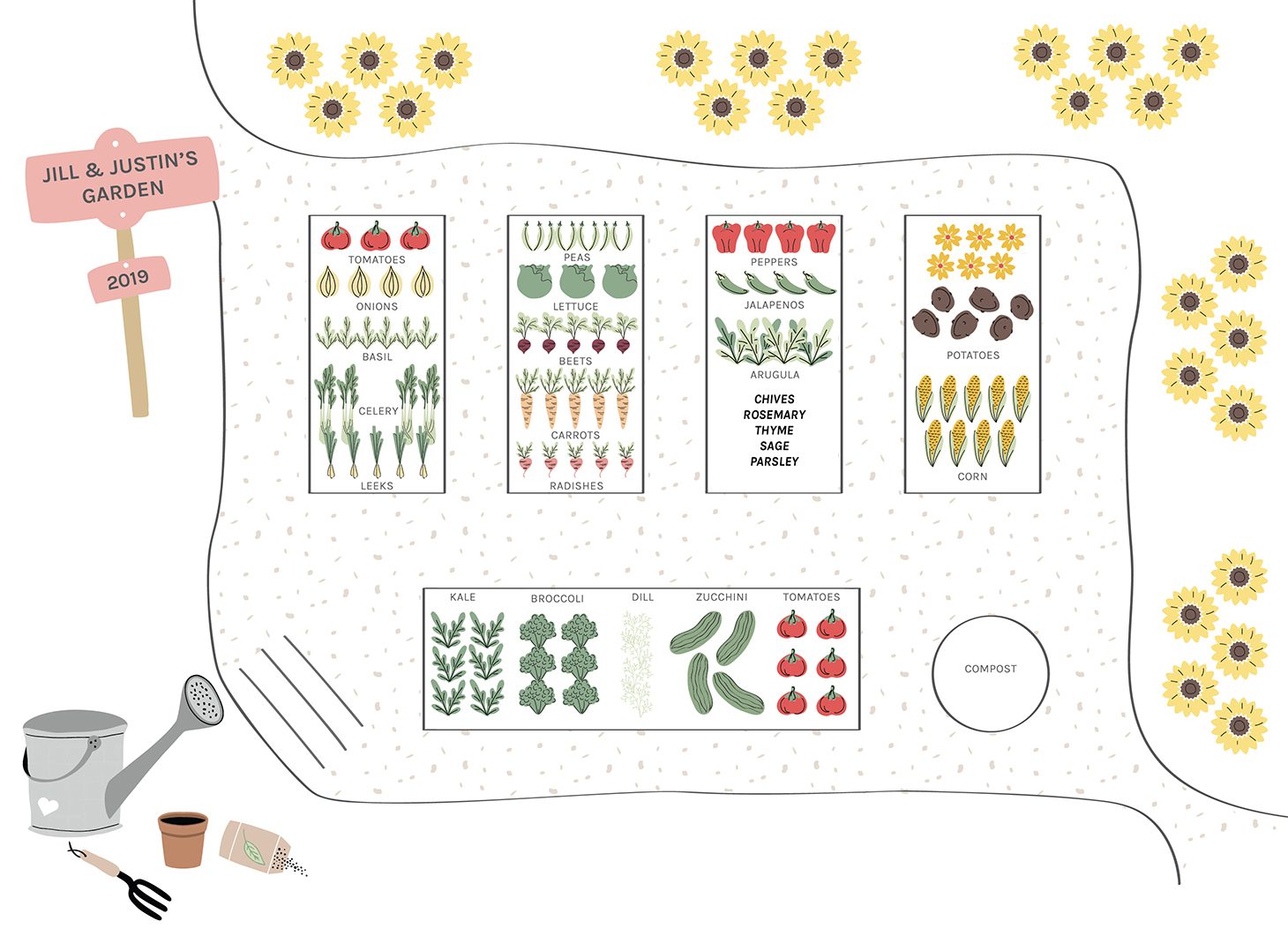
Here are some of the things that we changed last season:
1. A new spot for our herbs
Justin made a new bed strictly for our herbs instead of planting them in the mix with our produce.
2. Planting corn, sunflowers, and pole beans together
We planted our corn, sunflowers, and pole beans together because they are known as the three sisters and they work really well together (companion planting). Taking the corn out of the bed and planting it around them in the soil actually freed up more room for produce (YAY!).
3. Changing up the layout
It’s always good to change the location of your items every year. For example, don’t plant your kale in the same spot as you did the season prior. Two years ago, when I planted my onions, I ended up with onion worms, and none of them ended up growing. So this year, I planted my onions in a completely different bed. This simple strategy will confuse the bad bugs and is really good for your garden soil.
Here is the layout of our garden from last year!
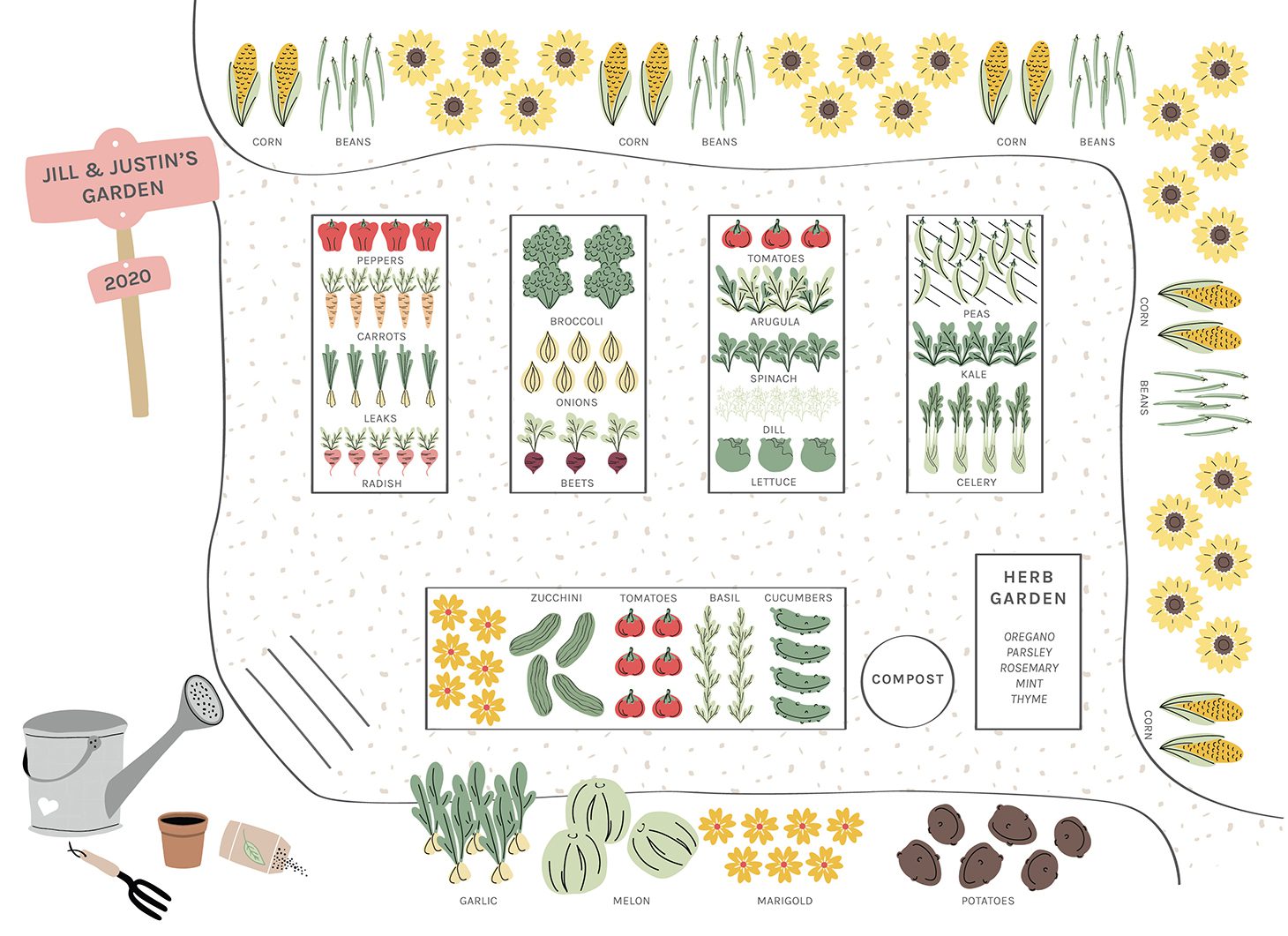
I really want to thank the team from West Coast Seeds for helping us construct our garden layout last year. Justin and I drew up the original plans and they helped tweak and refine it. Our garden layout has been approved by the professionals at West Coast Seeds and if you have similar beds you are more than welcome to use this configuration as well!!
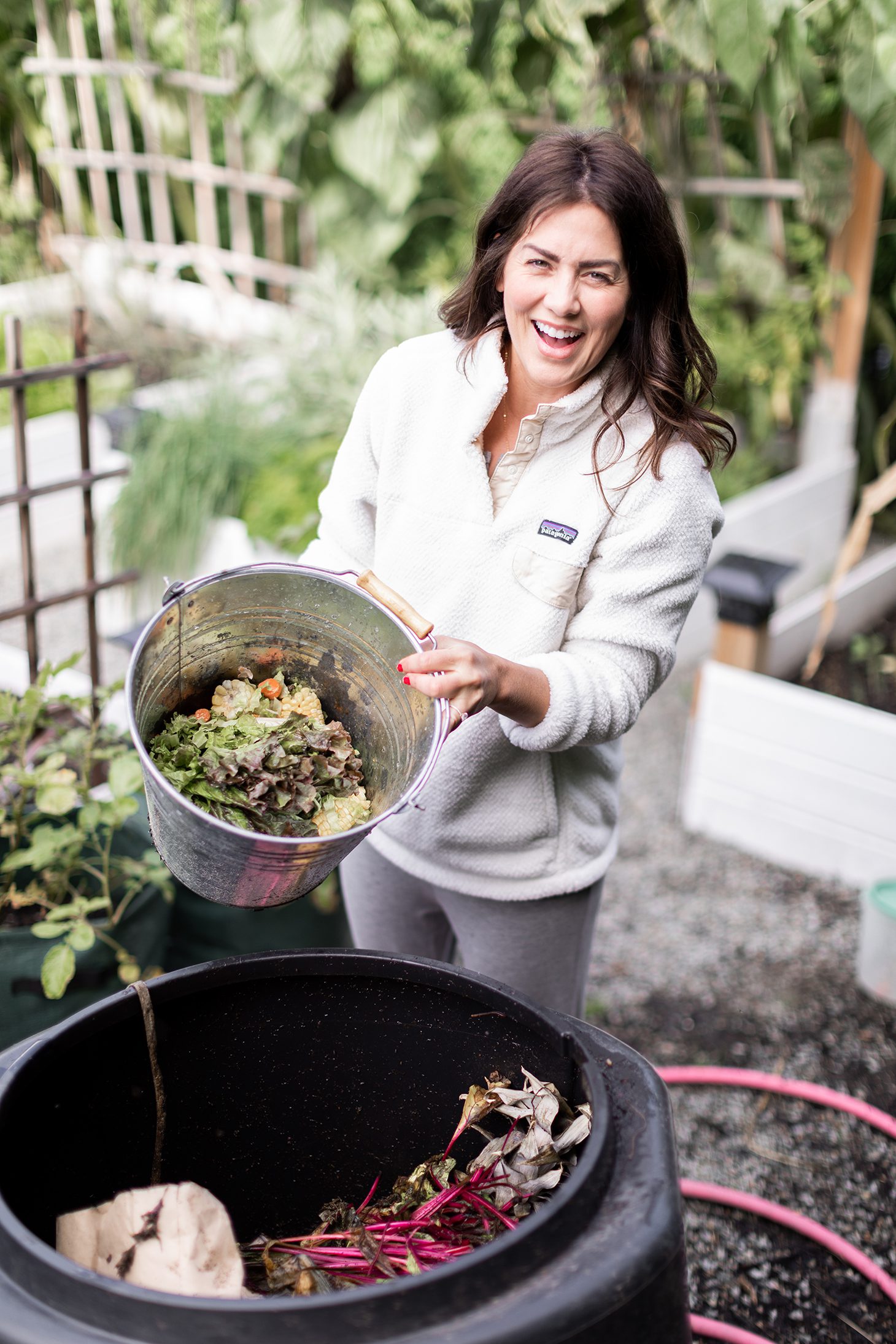
In other news, my compost is doing really well! For anyone that is thinking about composting but not sure where to start, you can find my post ALL about it, here. Something important to keep in mind (that I learned along the way!) is that it’s crucial to keep all organic matter out of the landfill. Unfortunately, when the organic matter goes to the landfill, it produces extremely toxic gasses for the environment.
So, if you have space and capacity to compost your organic matter I would HIGHLY recommend it. Not only is it AMAZING for your garden (it’s referred to as gold!!), but it will also make a difference in our local landfills and our environment!
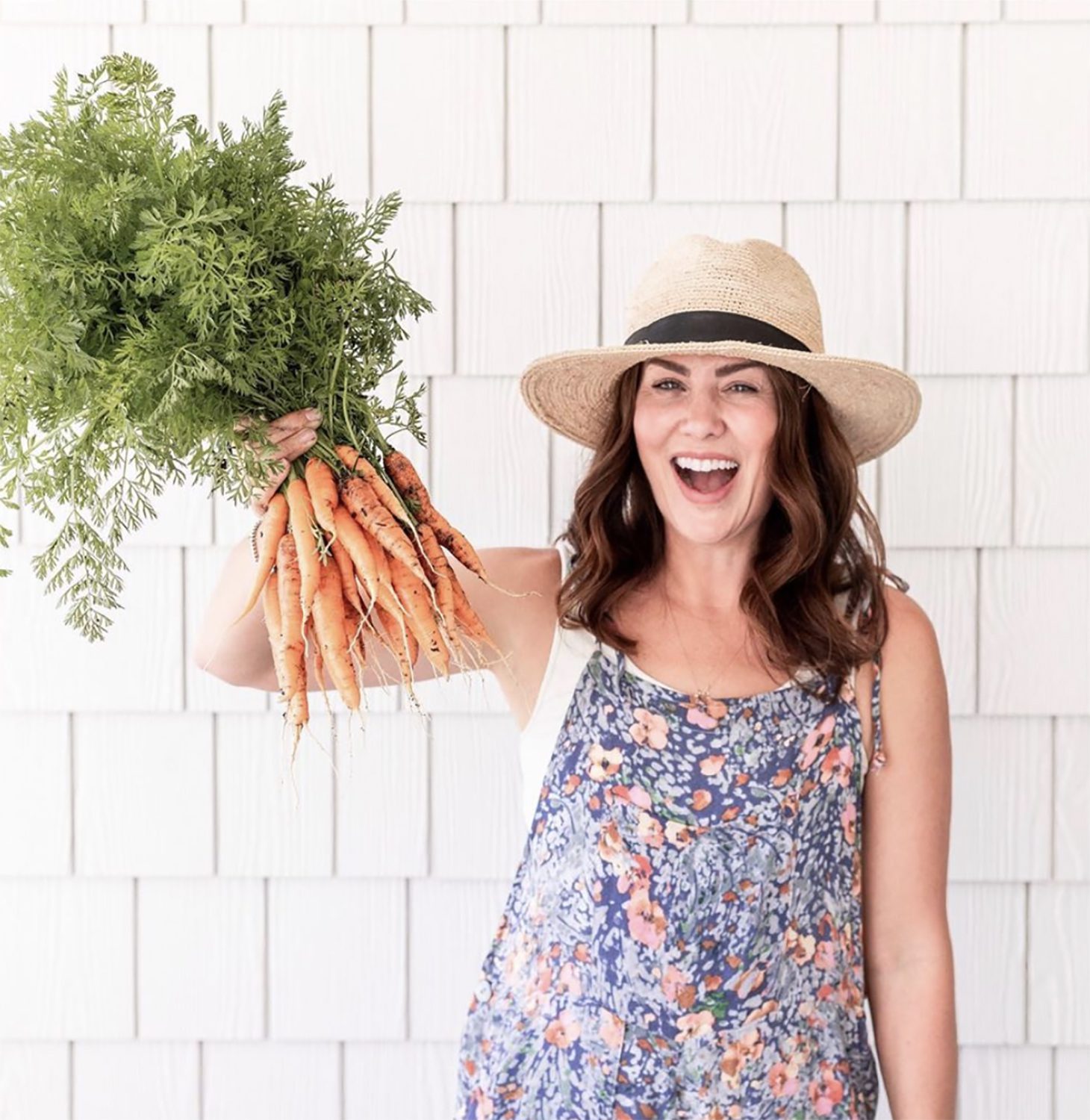
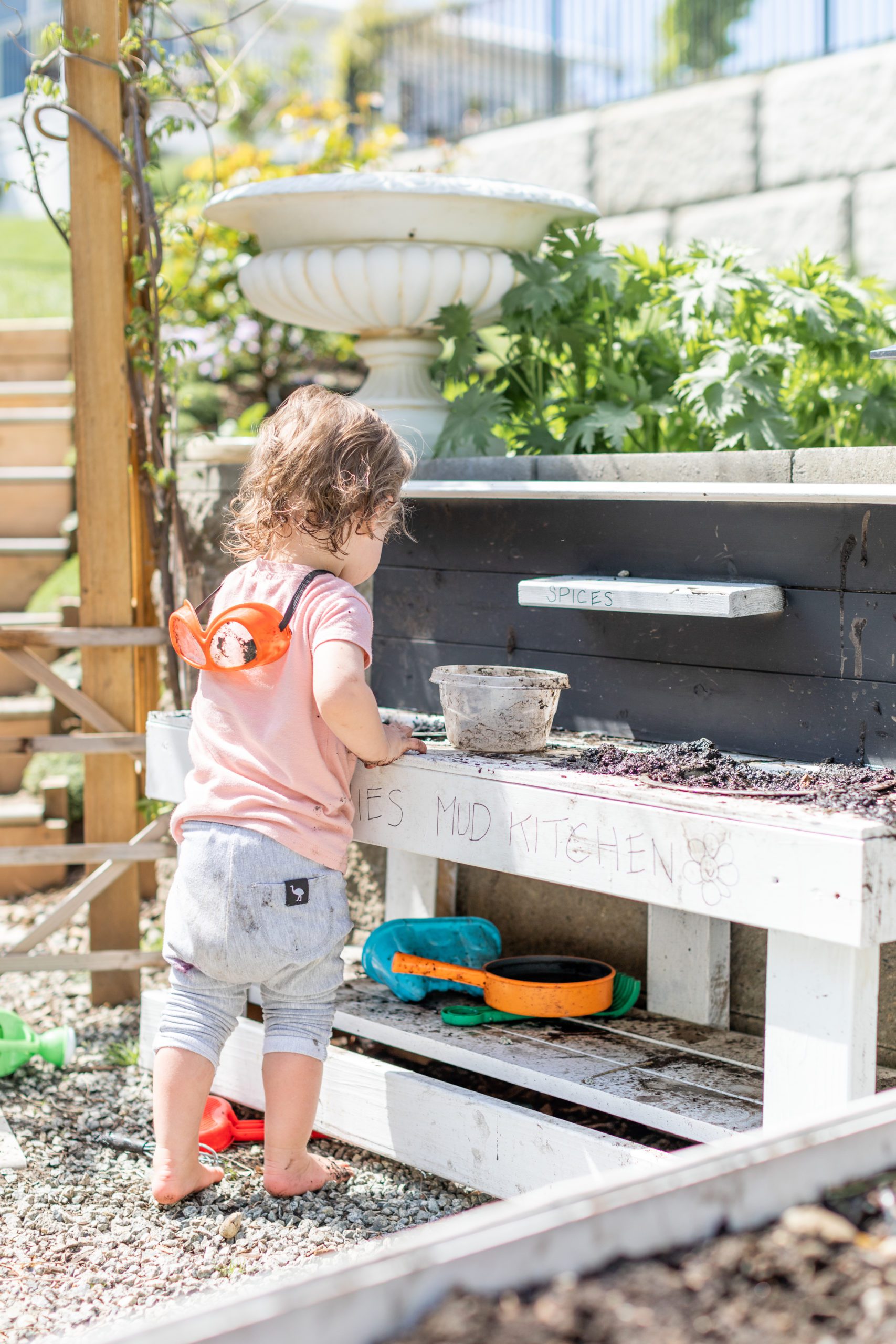
There you have it! I hope you find these tips and tricks useful!! I would love to hear your best-kept vegetable garden secrets in the comments section below!
xo
Jilly
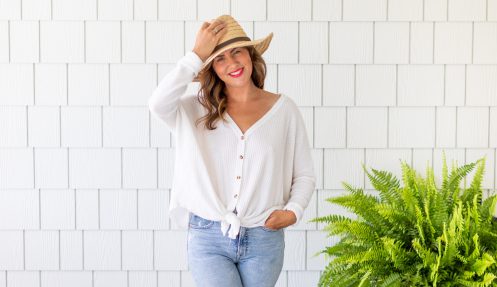
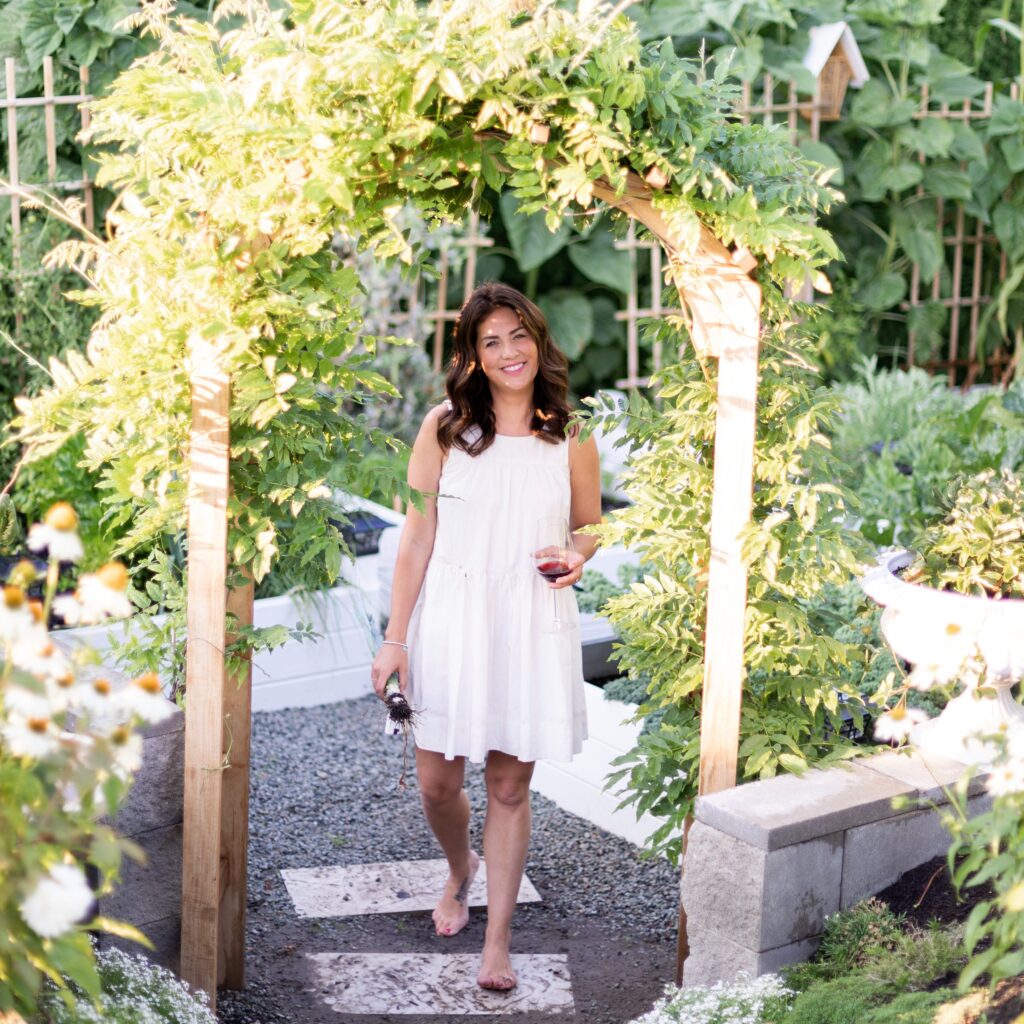
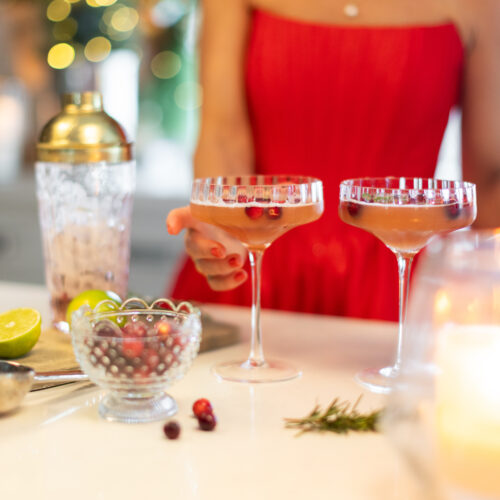
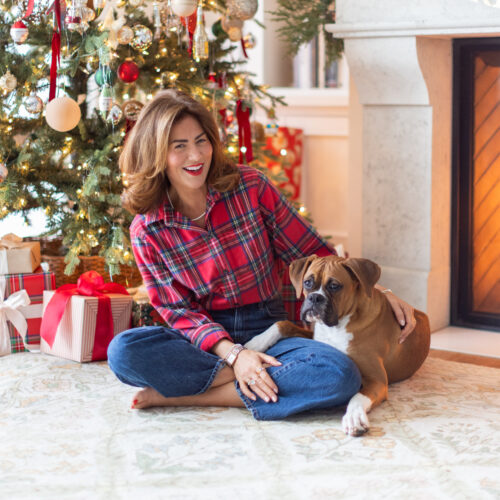
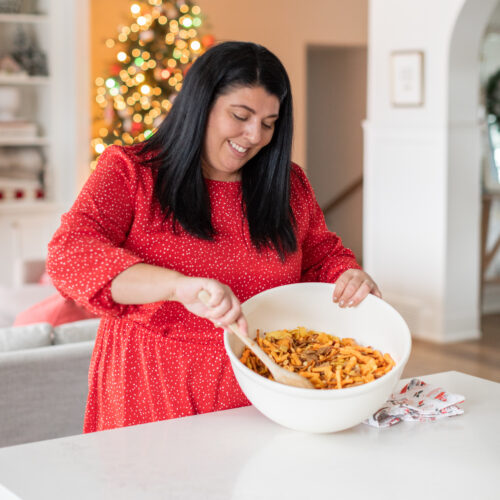
Where did you get your plastic garden beds?
Justin actually built our garden beds! xo
Can you or Justin provide specifics on the garden beds he built? So for example what material did he use and what are the dimensions? Did he also paint them?If so with what product and in what color? Thought it could be a fun DIY project your followers could attempt.
I’ll try to convince him to write a blog post about this!! xo
What size is your garden boxes?
You should check out the Rusted Gardener on Youtube https://www.youtube.com/user/pilarchik
You seem so excited about gardening and he has hundreds of videos on seed starting, building your garden, soil composition, and anything else you could want to know about gardening. There’s so much to know but there’s nothing like the satisfaction of growing your own veggies!
Can you give the dimensions of the garden boxes you have?
What do you do to protect your garden from pests (squirrels and bunnies) from eating everything and is still aesthetically pleasing? A third of our plants have been eaten already by the next morning.
The 3 sisters are corn, beans and squash not sunflowers.
You have a very pretty garden. Just a few things from my own experience:
The “three sisters” planting is typically corn, beans, and squash. The squash is very important acting as a weed suppressor and helping the ground retain moisture. Sunflowers can be added for additional climbing but will compete with the corn and I’ve found that sunflowers don’t like sharing their planting ground. 3 Sisters can be very successful. We planted three 4’×10′ plots last year of squash, corn, and beans and still have corn (flour and popcorn) and squash this May. Corn also needs to be planted closely so that it can pollinate by wind. Having a single row around your garden will require you to hand pollinate your corn.
Also rotating crops is important but you must rotate by plant family, not just plant variety to reduce disease and pests. For example broccoli, cabbage, and kale are the same family. Peppers and tomatoes are the same family so if you rotate one into the other’s previous spot, it’s more likely to suffer from disease and pests. You may not notice the second year but each successive year will get worse. An easy way to rotate if you don’t know plant families is to rotate by 3 plant types- leafy vegetables, root vegetable and fruiting vegetables (the exception being potatoes which are also the same family as tomatoes and peppers, etc.) You can easily do this as you have 6 spots, 5 beds and the border. Designate 2 beds for each plant type and rotate so that you did not plant that type again until after 3 years.
Hey Jillian. What do you do to keep mint in check from running and taking over your herb bed? I haven’t had this experience personally but a friend did and I guess it was a pain to dig out. My herb garden is what brings me the most joy in spring with now-established perennial chives ready for snipping and at least one species surprisingly seeding itself (this year it seems oregano hasn’t seeded but actually overwintered!).
What is growing over your archway trellis? I love have full it got!
Also, my tip for unruly mint… I actually dig in giant nursery pots, into the ground, so the mint can run wild everywhere, but from the top, you can’t tell there is a pot underneath the soil.
What size are your garden beds?
I would love a blog or diy on these garden boxes
I’ll try and convince Justin to write one!! xo
What are the white flowers you plant around the edges of your garden boxes and why? Do they keep the bugs away? We had so many bugs this year!
I have weekly compost pickup in metro Vancouver (Richmond) but was told that there is no compost pickup in Kelowna. My son recently moved to Kelowna for work and feels “weird” to throw compost items in the garbage. I have taught him well as he sorts his cans, glass,, cardboard, paper. He is downtown apartment living so a balcony garden is his best bet.
Thank you very much for sharing these details. I was looking for a proper guide for a vegetable garden.
Gardening newbie here. Love the maps. Any chance north is the top of the map and south is the bottom, or does that kind of plant positioning make a difference?